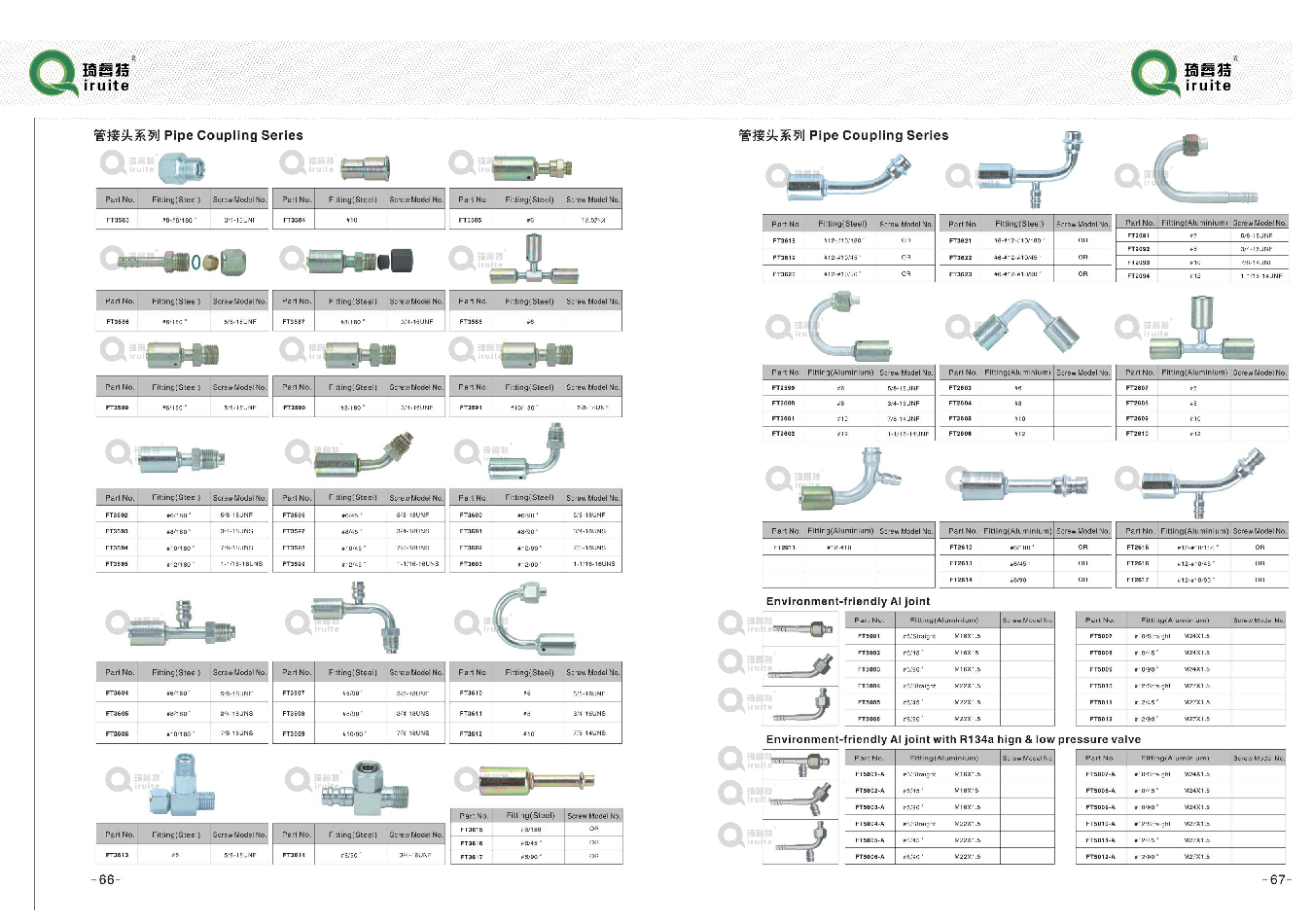universal power steering hose
Understanding Universal Power Steering Hoses An Essential Component for Optimal Vehicle Steering
Power steering is a crucial feature in modern vehicles that enhances steering ease and control. One of the essential components of this system is the power steering hose. This article will delve into the significance of universal power steering hoses, their types, installation, and maintenance.
What is a Power Steering Hose?
A power steering hose is a vital part of the power steering system in vehicles that facilitates the flow of hydraulic fluid between the power steering pump and the steering gear. This fluid pressurizes the steering mechanism, making it easier for drivers to steer their vehicles, especially in tight turns or during parking.
Types of Power Steering Hoses
Power steering hoses come in several variations, but they can generally be classified into two main types
1. High-Pressure Hoses These hoses are designed to withstand high-pressure conditions as they transport hydraulic fluid from the pump to the steering gear. They are typically made of robust materials, like rubber or reinforced synthetic compounds to prevent bursting under pressure.
2. Low-Pressure Hoses These hoses return the fluid from the steering gear back to the pump. They operate under much lower pressure compared to high-pressure hoses and are also constructed from durable yet flexible materials to accommodate the return flow.
Why Choose a Universal Power Steering Hose?
Universal power steering hoses are designed to fit multiple vehicle makes and models, offering flexibility and convenience for both vehicle owners and mechanics. They are often adjustable and can be trimmed to fit specific applications. The advantages of using a universal power steering hose include
- Cost-Effectiveness Universal hoses are generally more affordable than OEM (Original Equipment Manufacturer) hoses, making them a popular choice for budget-conscious consumers.
- Versatility These hoses can be used in various vehicles, including cars, trucks, and SUVs, reducing the need for a wide range of specific parts.
- Accessibility Many auto parts retailers carry universal power steering hoses, making them readily accessible for quick repairs or replacements
.Installation of Universal Power Steering Hoses
universal power steering hose

While installing a universal power steering hose is relatively straightforward, it does require some mechanical knowledge and tools. Here’s a brief overview of the steps involved
1. Preparation Make sure the vehicle is parked on a level surface, and the engine is turned off. Gather necessary tools such as wrenches, a socket set, and a pair of pliers.
2. Drain the Fluid Before removing the old hose, drain the power steering fluid into a clean container to prevent spills.
3. Remove the Old Hose Use the appropriate tools to detach the old hose from the pump and steering gear. It’s advisable to check for any signs of wear or leaks during this stage.
4. Install the Universal Hose Trim the universal hose to the required length, ensuring a proper fit. Connect it securely to both the pump and steering gear, tightening the fittings appropriately.
5. Refill the Fluid Once the new hose is in place, refill the power steering fluid, following the manufacturer’s specifications.
6. Check for Leaks Start the vehicle and turn the steering wheel from lock to lock, checking for any signs of leaks around the new hose.
Maintenance and Care
To ensure the longevity of your power steering system, regular maintenance is key. Here are some tips for maintaining your universal power steering hose
- Inspect Regularly Routinely check the hose for any signs of wear, cracks, or leaks. Early detection can prevent larger issues down the line.
- Flush the System Consider flushing the power steering fluid according to the manufacturer’s recommended schedule to ensure clean and effective fluid circulation.
- Use Quality Fluids Always use the recommended power steering fluid to maintain system integrity and performance.
Conclusion
Universal power steering hoses are an integral part of the steering system, providing flexibility and efficiency for various vehicles. Understanding their functionality, installation, and maintenance is essential for any vehicle owner. By ensuring proper care and timely replacements, drivers can enjoy a smooth and responsive steering experience for years to come.
-
Ultimate Spiral Protection for Hoses & CablesNewsJun.26,2025
-
The Ultimate Quick-Connect Solutions for Every NeedNewsJun.26,2025
-
SAE J1401 Brake Hose: Reliable Choice for Safe BrakingNewsJun.26,2025
-
Reliable J2064 A/C Hoses for Real-World Cooling NeedsNewsJun.26,2025
-
Heavy-Duty Sewer Jetting Hoses Built to LastNewsJun.26,2025
-
Fix Power Steering Tube Leaks Fast – Durable & Affordable SolutionNewsJun.26,2025

